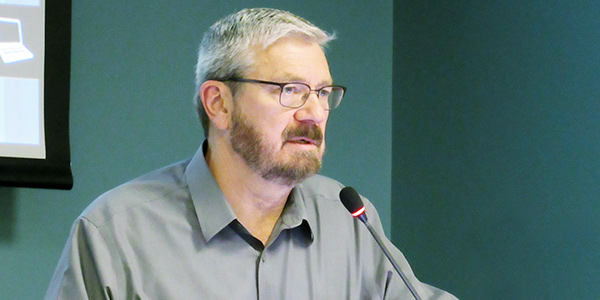By Amanda Durish Cook
MISO last week shut down the prospect of allowing non-transmission owners to operate storage-as-transmission assets (SATA) in the RTO’s initial ruleset for the resources, just as a new poll revealed that most stakeholders want to devote more time to weighing the possibility.
Planning Advisory Committee sectors last month voted via email in favor of further discussion on a DTE Energy proposal that MISO’s first SATA rules include a path for non-TOs — as well as TOs — to own and operate SATA. (See MISO Floats Draft Storage-as-Tx Rules.)
The motion passed with 5.5 votes in support, 2.5 votes in opposition and two abstentions from MISO’s Coordination Member and State Regulatory Authorities sectors. Opposition votes came from the Transmission Owner and Eligible End-User Customers sectors, with the transmission developer sector splitting its vote. MISO’s 10 sectors can divide their single vote to reflect differing opinions within a sector. Results were revealed during a special May 15 conference call of the PAC.
MISO determined earlier this year that only registered TOs would be eligible to own SATA in order to avoid introducing complexities around cost recovery, particularly related to how non-TOs would be compensated for providing transmission services.
DTE has said non-TO SATA should be permitted to bypass the interconnection queue and connect to MISO’s transmission system through newly conceived storage interconnection agreements. Absent that provision, DTE has said MISO’s SATA ruleset would create preferential treatment for TOs and create barriers to entry for storage.
Still, MISO is staying course that SATA should only be developed by existing or eligible new TOs, with staff explaining that non-TO-owned SATA is simply too complicated to introduce.
“While we appreciate the idea and the effort that DTE and other stakeholders have put into this … we simply don’t accept this proposal,” MISO Director of Planning Jeff Webb said.
Webb said MISO’s upcoming filing will detail the discussion the PAC has held on the possibility of non-TO SATA. However, he said the RTO has a “fundamental disagreement” that an asset used exclusively to address a transmission issue and is connected to the transmission system can simultaneously be a non-transmission asset.
“We think FERC’s been pretty clear that storage should exist within current generation, transmission and distribution [classifications],” Webb said.
“Obviously there will be some sectors that are disappointed in this result, especially with the PAC vote,” DTE’s Nick Griffin said.
MISO still maintains that non-TO-owned storage can already enter the transmission planning process under the non-transmission alternatives (NTAs) provision (BPM 020), which allows generation and demand-side resources to serve as alternatives to transmission proposals and be studied under the annual Transmission Expansion Plan (MTEP). However, NTAs must either scale the interconnection queue or connect via the distribution system. Under the proposed SATA rules, a transmission system connection without a queue requirement would be reserved only for TOs that operate SATA.
Stakeholders criticized the NTA provision as being seldom used. Griffin said it is essentially “there for show, but not for use.”
Webb agreed that the NTA process could use modeling improvements.
Invenergy also repeated criticisms that MISO’s first SATA rules are too narrow, are discriminatory and were crafted in a “deficient stakeholder process.”
But MISO said it created rules “appropriate in addressing storage as transmission.”
“We do not agree that treatment of storage as a transmission asset is discriminatory, nor that the nearly yearlong stakeholder process has been deficient,” the RTO said.
MISO Manager of Expansion Planning Lynn Hecker said staff are still working through how to estimate the useful life, degradation and lifetime cost of ever-evolving storage technologies to be able to evaluate them against traditional wires in the MTEP.
The RTO plans to make its first SATA filing with FERC in late June. Webb said he would return to the June PAC meeting with a final proposal.




